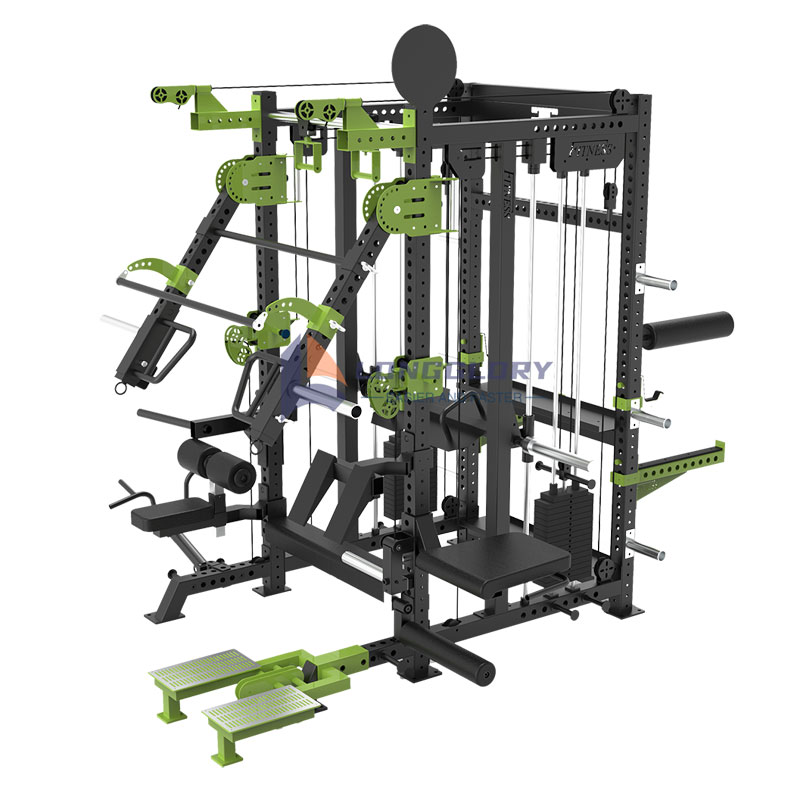Exploring the Differences: Commercial Squat Rack Smith Machine vs. Traditional Squat Rack
2024-04-26
In the world of strength training, the squat rack is a staple piece of equipment that forms the foundation of many workouts. However, in recent years, a new player has emerged on the scene: the Commercial Squat Rack Smith Machine. While both offer benefits for building strength and muscle, they each have distinct features that set them apart. In this blog, we'll dive into the differences between these two gym essentials and explore the unique advantages they bring to the table.
Traditional Squat Rack:
1. Freedom of Movement:
One of the key features of a traditional squat rack is its open design, which allows for unrestricted movement during exercises. With no fixed barbell guide system, users have the freedom to perform exercises like squats, deadlifts, and overhead presses with a full range of motion.
2. Requires Spotter:
Because there is no guided barbell system, using a traditional squat rack often requires a spotter, especially when lifting heavy weights. This adds an element of safety but may also limit the ability to train solo or during off-peak hours when a spotter may not be available.
3. Versatility:
Traditional squat racks are highly versatile and can accommodate a wide range of exercises beyond just squats. With adjustable safety pins and barbell holders, users can customize their workouts to target different muscle groups and fitness goals.
4. Skill and Technique:
Using a traditional squat rack requires a certain level of skill and technique to perform exercises safely and effectively. Without the assistance of a guided barbell system, users must rely on proper form and balance to execute movements correctly.
Commercial Squat Rack Smith Machine:
1. Guided Barbell System:
The most significant difference between a Commercial Squat Rack Smith Machine and a traditional squat rack is the presence of a guided barbell system. This system consists of a fixed vertical barbell track with hooks or catches that allow for controlled up-and-down movements during exercises.
2. Enhanced Safety:
The guided barbell system of a Commercial Squat Rack Smith Machine provides added safety and stability, particularly when lifting heavy weights. Users can lift and rerack the barbell with confidence, reducing the risk of injury, especially when training without a spotter.
3. Solo Training:
Unlike a traditional squat rack, a Commercial Squat Rack Smith Machine can be used for solo training without the need for a spotter. The guided barbell system allows users to lift and lower the weight safely on their own, making it ideal for independent workouts.
4. Fixed Movement Pattern:
While the guided barbell system offers increased safety, it also restricts movement to a fixed vertical plane. This may limit the variety of exercises that can be performed compared to a traditional squat rack, which allows for more dynamic movements and angles.
Conclusion:
In summary, both the Commercial Squat Rack Smith Machine and the traditional squat rack have their own unique features and benefits. The traditional squat rack offers freedom of movement and versatility, while the Commercial Squat Rack Smith Machine provides enhanced safety and convenience with its guided barbell system. Ultimately, the choice between the two depends on individual preferences, fitness goals, and training preferences.



